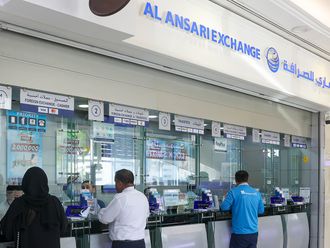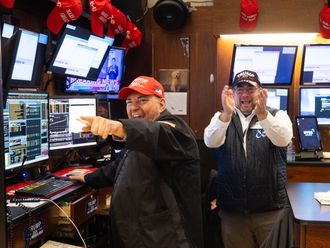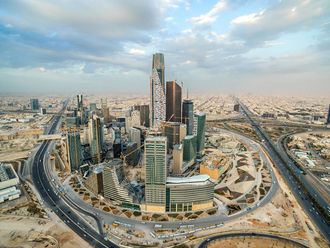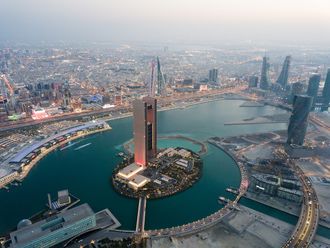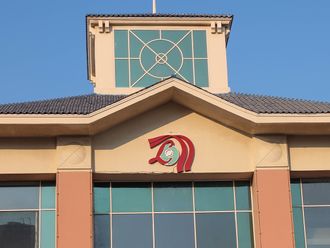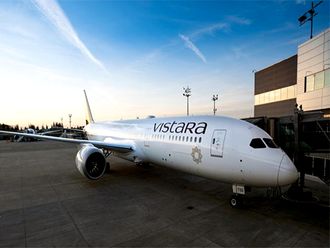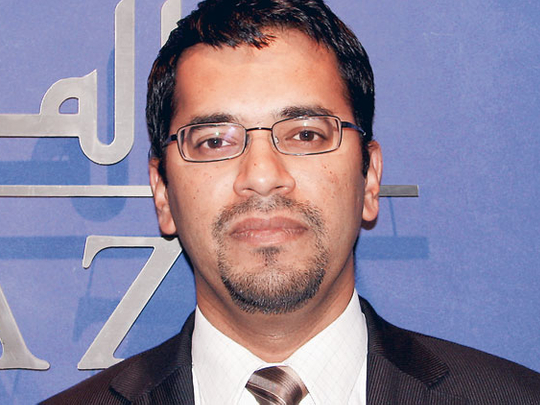
Gulf News: When was the fund launched and how would you describe it?
Mujib Mousa: The fund was started back in January 2006. It's a long only fund and the initial mandate was to invest in GCC equities. We continued that way till September 2008, when we expanded the mandate to include North Africa. This meant covering the entire Middle Eastern and North African stock markets, with Egypt as a prime market.
Part of the reason to expand the mandate was to capture markets that have trading liquidity and visibility on the benchmark index.
I should also mention that, starting from August 1 this year, we've moved our benchmark Index from the MSCI Arabian Composite Index to the S&P Pan Arab Composite Index. Because of the licencing of data issues, which the Saudi Arabian market refused to share, MSCI has decided to drop Saudi's Tadawul Index.
The objective of our fund is to earn capital appreciation and to achieve that we focus on large cap companies and growth-oriented stories. Focusing on growth-oriented investing themes is the way to earn capital appreciation. In a growing economy like that of the Middle East, growth-oriented stocks are the ones generally wanted by stock market investors, and the ones which command rich stock premiums. Such stocks are typically characterised by sizeable market caps and healthy earnings and are high on trading liquidity.
What kind of redemptions have you seen in the last two years and have inflows improved?
When our fund size was at its peak, back in September 2008, it was $55 million (Dh202.01 million) just before the collapse of Lehman Brothers and the consequent start of the global economic crisis. Between the September and November 2008 sell-off, markets in the region slipped into a steep correction mode as reflected in the 50 per cent decline on the MSCI Arabian Composite Index.
For the year 2008, the fund's NAV (net asset value) dropped by 40 per cent, when the MSCI Arabian Index, the benchmark, closed 54 per cent down. Naturally we faced redemption pressures because of the crashing markets. The fund size came down to $32 million at the end of Year 2008. In times of extreme crisis, like back in 2008, investors usually move their money out quickly and that happened in this region too. The Fund started seeing new money coming in only after mid-2009.
Around 70 to 80 per cent of our clients are institutions, including corporates. The fund's NAV closed 14 per cent higher for the year 2009 and the fund size grew to around $40 million by the end of the year. For the last two years, the net impact, in terms of redemption, has been almost evenly matched and that's because of a market correction in prices. As of July 2010, the year to date return on the Fund is 1.8 per cent, which is still short of the benchmark Index return at 6.5 per cent.
What has been your strategy in terms of country and sector allocation?
Until 2009, the investment strategy was substantially underweight in relation to Saudi Arabia. That was a reasonably good strategy to adopt as we were concerned about the above-average stock premiums paid for Saudi companies. But in 2009, we got it wrong by remaining underweight on Saudi. For 2009, Saudi outperformed the composite benchmark index by a wide margin. It had posted a 38 per cent return on the MSCI Saudi index, against the 22 per cent return on the composite MSCI Arabian Index. And that was the reason for the relative underperformance of our fund in the year 2009 - the fund's NAV returned by 14 per cent.
The dynamic in the Saudi market has been changing since early 2009 because of different factors: oil prices rising; US and global stock markets doing well, which has had a positive impact on the Saudi market; and a general increasing appetite for risk taking in different markets, including the US and other emerging markets.
We had about 15 to 20 per cent allocated for Saudi before the rally in Saudi equities began late in quarter one of 2009. It was significantly underweight considering that the composite benchmark index had 35 to 40 per cent allocated to Saudi.
Later in 2009, the Saudi allocation in the benchmark index rose from 45 to 50 per cent. With that happening, we also started scaling up Saudi exposure gradually and in 2010, our exposure to Saudi ranged from around 45 to 50 per cent with the strategy to reduce the fund's tracking error. Our strategy was based on the improvement expected in the corporate earnings profile of Saudi companies, especially in the petrochemical sector, with a key element being the 15 to 20 per cent increase in the government's proposed budget spending for the fiscal year 2010.
The overall global macroeconomic environment looked better and that was positive for the petrochemicals sector, with stocks in the sector comprising about 25 to 30 per cent of the Saudi index. We did not miss out in capturing the returns from this sector and we positioned out portfolio accordingly during early 2010. It has maintained a high exposure to petrochemicals for much of Year 2010.
During much of Year 2009, Kuwait exposure was between 13 and 15 per cent. Egypt and Qatar were mostly eight to 11 per cent; the UAE was five to six per cent; Oman was three to four per cent and cash was seven to 10 per cent. As of now, we remain fully invested in Saudi; overweight in Kuwait, Qatar, Oman and underweight in Egypt.
Our investing strategy is based on the broader macroeconomic environment, which is dependent on the economic fundamentals; trading liquidity; and valuations. The idea after all is to try and outperform the benchmark.
With regard to sector exposures in the fund, these are mainly to banks across the Mena region, as well as petrochemicals with a focus on Saudi, and telecom stocks and consumer plays. Real estate is not dominant. About 75 per cent is allocated to banking, petrochemical and telecom companies. The fund has a primary focus on investing in large cap stocks that are actively traded and it has a bias towards growth-oriented stocks. Selective mid-cap exposures are taken in the fund with a higher risk-return profile to improve NAV performance. But as per the volatile market cycles seen on GCC markets, we move the risk exposures in the fund between high-beta and low-beta stocks to avoid excessive volatility in its performance. Historically, the fund's NAV has a 20 per cent annualised standard deviation of weekly returns, against 29 per cent on the MSCI Arabian Index.
Markets over the last year and a half have been risky and volatile. Sector rotation is a constant thing. As a broad rule of thumb, we look for stocks with forward price earning multiples of eight to 14; prices to book multiples of one to 2.5 times; EV/EBITDA at around four to seven times and dividend yields on the portfolio of three to four per cent. There are 45 to 50 stocks in our portfolio, which fit into the above mentioned valuation framework.
As a fund manager what lessons have you learnt in handling this fund through the global financial crisis?
I've been the manager since the fund's inception in January 2006. Since then I've witnessed fluctuations in the markets and seen extreme volatility as the crisis hit in 2008 and crude prices plummeted. At that time, we were all saying in the region that the global crisis wouldn't affect us. We were a bit smug about it. But soon the realisation dawned on us that the GCC is not immune to global financial and stock market trends. And soon we were facing a liquidity crisis with several businesses in the region badly affected, which eventually hurt the leading banks. Across most of the GCC stock markets, banking is a dominant sector in the stock market and they felt the pinch as bad loans surfaced. Negative sentiments spread across the length and breadth of the market and most of the actively traded stocks across all listed sectors were affected.
As fund manger, I realised we needed to react quickly to the global economic crisis and I saw how it was affecting us in the region. We had to make quick investment decisions, like increasing the cash component and moving to defensives. It's important to act fast during times of crisis. But at the same time, I learnt that a fund manager should also react quickly to market reversal trends and avoid bias, in order to hold excessive cash levels. The switch between avoiding risk and embracing risk has to be efficiently balanced in managing a portfolio and therefore calls for a clear strategy. In fact, if we had been more active and a little more aggressive, primarily in the second quarter of 2009, then the returns would have been better than the 14 per cent, achieved for year 2009.
The other important lesson to take on board is the importance of managing market volatility efficiently. We tried to do that by putting aside 30 to 40 per cent in cash, in late 2008. In the last six to eight months of this year, we have acquired 10 to 15 per cent in cash, which means we're going up. The other lesson is to have discipline in making strategic investment decisions, as well as in making trading calls. Volatility in the markets provides you with the opportunity to trade. How much you should trade depends, but 15 to 25 per cent can be allotted to trading. For a good trading strategy, a fund manager has to be extremely disciplined. He should always stick to a rationale for buying and selling stocks and strictly adhere, in order to limit loss. That's part of the discipline.
And finally what investment tips do you have for the region's retail investors?
GCC markets, as we all know, are still driven by retail investors. Almost to the tune of 75 per cent, more in some cases. However, a retail investor largely looks at short-term investing horizon and finds it hard to practice the discipline of holding stocks in his portfolio for the long-term. We have to grant them that they do not have the advantage which institutional investors have--that of doing detailed fundamental research, meeting managements and having a more professional investment screening process. They mostly rely on the media, get swayed by rumour and indulge in speculation. Information is not that efficient in the markets here and there's ample room for speculation, though speculation is not always bad.
As a retail investor, one needs to have the right balance of investing between short term and long term cycles on the market. Because the region's markets are volatile, fast and and fairly efficient, trading strategies can bring about good returns and that means buying and selling in the short term. So a retail investor can have about 60 to 70 per cent of the portfolio in the long term and acquire good quality stocks that have the flavour of both growth and value. The rest can be allocated for trading strategies.
Also, retail investors must make an effort to study the finances of a company and understand what the business of the listed stocks is, as well as what are the investment and valuation risks. As stock markets in the GCC region become more sophisticated and more institutions come into the market, the pricing of stocks on the stock markets is expected to gain efficiency and in the process, markets will become less volatile, as seen with the experience of other emerging markets. When that happens, retail investors may not experience extreme volatility in stocks to earn quick returns over short investing cycles.


